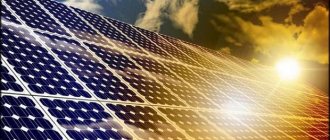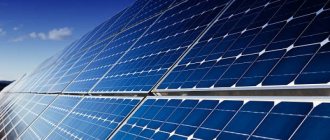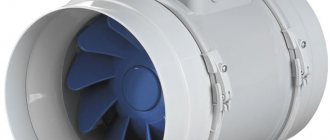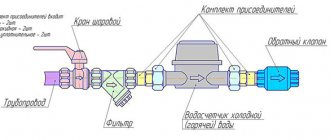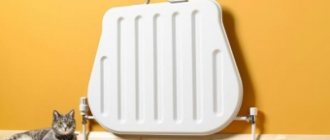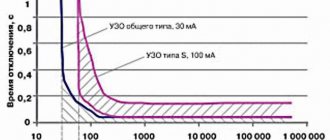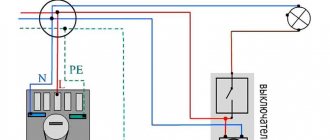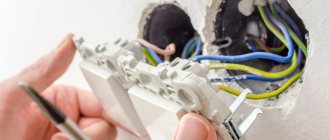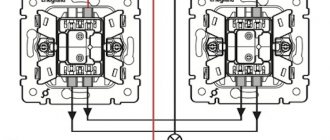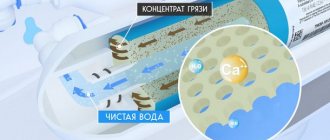Here you will learn:
- What is a household solar battery?
- Solar battery device
- Types of photocells
- Connection options
- How to connect solar panels to make the most of the capabilities of all elements
- Stages of connecting panels to solar power plant equipment
- Economic feasibility
Solar panel connection diagrams When installing solar power plants, the question inevitably arises: how to connect solar panels and in what order to connect them to the home’s power supply system. Now let's look at everything in detail.
What is a household solar battery?
Solar energy is a real find for obtaining cheap electricity. However, even one solar battery is quite expensive, and in order to organize an effective system you need a considerable number of them. Therefore, many people decide to assemble a solar battery with their own hands. To do this, you need to know how to solder a little, since all the elements of the system are assembled into tracks and then attached to the base.
To understand whether a solar power station is suitable for your needs, you need to understand what a household solar battery is. The device itself consists of:
- solar panels
- controller
- battery
- inverter
If the device is intended for heating a home, the kit will also include:
- tank
- pump
- automation kit
Solar panels are rectangles 1x2 m or 1.8x1.9 m. To provide electricity to a private house with 4 residents, 8 panels (1x2 m) or 5 panels (1.8x1.9 m) are needed. Install the modules on the roof on the sunny side. The roof angle is 45° with the horizontal. There are rotating solar modules. The principle of operation of a solar battery with a rotating mechanism is similar to a stationary one, but the panels rotate following the sun thanks to photosensitive sensors. Their cost is higher, but the efficiency reaches 40%.
The design of standard solar panels is as follows. The photoelectric converter consists of 2 layers n and p type. The n-layer is made on the basis of silicon and phosphorus, which leads to an excess of electrons. The p-layer is made of silicon and boron, resulting in the formation of an excess of positive charges (“holes”). The layers are placed between the electrodes in this order:
- anti-glare coating
- cathode (electrode with a negative charge)
- n-layer
- a thin separating layer that prevents the free transition of charged particles between layers
- p-layer
- anode (electrode with a positive charge)
Photovoltaic modules are produced with polycrystalline and monocrystalline structures. The former are characterized by high efficiency and high cost. The second ones are cheaper, but less effective. The power of polycrystalline ones is enough for lighting/heating a house. Monocrystalline ones are used to generate small portions of electricity (as a backup energy source). There are flexible solar cells based on amorphous silicon. The technology is in the process of modernization, because The efficiency of an amorphous battery does not exceed 5%.
Battery charging controller
The battery charging controller is designed to redistribute the generated electricity. The priority is to keep the battery charged and, when fully charged, to direct the energy to the inverter.
There are two ways to organize charging control:
- PWM (PWM) controller is a device that generates its own measuring pulses with a frequency (about 1 Hz) to monitor the condition of the battery in a wide range of characteristics (pulse wide). Circuit with simple relay logic, i.e. above the voltage on the battery (acid batteries - 16.2 V) - turned off the charging, below - turned it on again.
- An MPPT controller with a processor constantly monitors the position of the maximum power point (MPP) of the solar battery in terms of current and voltage. The other arm of the controller monitors the condition of the battery. The processor compares the data and determines the current and voltage values sent to the battery depending on the charge level.
Both types of controllers provide comfortable battery operation and do not have decisive advantages over each other. The advantage of MPRT is the visibility of its work process and the ability to accumulate information.
Solar battery device
When planning to connect solar panels yourself, you need to have an idea of what elements the system consists of.
Solar panels consist of a set of batteries with photovoltaic cells, the main purpose of which is to convert solar energy into electrical energy. The current strength of the system depends on the intensity of the light: the brighter the radiation, the greater the current generated.
In addition to the solar module, the design of such a power plant includes photoelectric converters - a controller and an inverter, as well as batteries connected to them.
The main structural elements of the system are:
- Solar battery – converts sunlight into electrical energy.
- A battery is a chemical current source that stores generated electricity.
- Charge controller – monitors battery voltage.
- An inverter that converts the direct electrical voltage of the battery into alternating 220V, which is necessary for the functioning of the lighting system and the operation of household appliances.
- Fuses installed between all elements of the system and protecting the system from short circuits.
- Set of MC4 standard connectors.
In addition to the main purpose of the controller - to monitor the battery voltage, the device turns off certain elements as necessary. If the indicator at the battery terminals during the daytime reaches 14 Volts, which indicates they are being overcharged, the controller interrupts charging.
At night, when the battery voltage reaches an extremely low level of 11 Volts, the controller stops the operation of the power plant.
How to avoid common mistakes?
The main errors encountered when connecting solar panels are incorrect connections and reversed polarity . There is only one way to avoid them - do not rush, carefully monitor the progress of work, and if in doubt, do not be lazy to check and clarify the purpose of the contacts or their polarity.
If solar panels are connected to the network, the circuit becomes more complicated, and there is a danger of short circuits or failure of the devices. In such situations, it is recommended to contact specialists who can correctly connect devices and connect solar modules. It will be useful for the user to draw up a wiring diagram for himself and mark the polarity on it. This will help you repeat the assembly later and eliminate errors.
Types of photocells
The main and rather difficult task is to find and buy photoelectric converters. They are silicon wafers that convert solar energy into electricity. Photocells are divided into two types: monocrystalline and polycrystalline. The former are more efficient and have a high efficiency of 20-25%, while the latter are only up to 20%. Polycrystalline solar cells are bright blue and less expensive. And mono can be distinguished by its shape - it is not square, but octagonal, and their price is higher.
If soldering is not very good, then to connect a solar battery with your own hands, it is recommended to purchase ready-made solar cells with conductors. If you are sure that you can solder the elements yourself without damaging the converter, you can purchase a kit in which the conductors are included separately.
Growing crystals for solar cells yourself is a rather specific task, and it is almost impossible to do it at home. Therefore, it is better to buy ready-made photocells.
Operating rules
One purchase and installation will not be enough for happiness - you should definitely familiarize yourself with the rules for using solar energy collection systems and batteries. In order to save energy, the maximum possible transfer of electricity from the solar receiver to the end consumer should be ensured. Batteries should be used exclusively for storing electricity. In this case, the service life will be artificially increased. Protection from shaking and other unwanted influences will serve the same purpose.
The temperature of the batteries should be kept under control. If increased, it may be necessary to add water or additional maintenance. As a result of lowering the temperature, the electrolyte may thicken. Both options can lead to rapid exhaustion and interruptions in work. This means that the owner will face additional costs for unplanned repairs. Deep discharging and charging the device from the solar panel leads to a reduction in capacity. This causes premature failure of the batteries. You can prevent an unpleasant end with the help of modern system components.
Over time, the installed system may need to be upgraded. In this case, you should once again study the technical characteristics of the existing equipment
It is important to understand what can be reused. Faulty and unsuitable elements must be replaced either exactly the same or with corresponding analogues
Do not neglect the possibility of re-equipping and improving the solar system in order to increase efficiency.
To learn how to choose a battery for solar panels, watch the following video.
Connection options
There are no questions when connecting one panel: minus and plus are connected to the corresponding connectors of the controller. If there are many panels, they can be connected:
- in parallel, i.e. connect the terminals of the same name to each other and obtain a voltage of 12V at the output;
- sequentially, i.e. connect the plus of the first to the minus of the second, and the remaining minus of the first and plus of the second to the controller. The output will be 24 V.
- series-parallel, i.e. use a mixed connection. This means that several groups of batteries are connected to each other. Inside each of them, the panels are connected in parallel, and the groups are connected in series. This output circuit gives the most optimal characteristics.
This video will help you understand in more detail how to connect alternative sources in your home:
Such power plants, using rechargeable batteries, accumulate solar charge for the home and store it, reserving it in battery banks. In America, Japan, and European countries, hybrid power supply is often used.
That is, two circuits operate, one of which serves low-voltage equipment powered by 12 V, the other circuit is responsible for the uninterrupted supply of energy to high-voltage equipment powered by 230 V.
Determining polarity with a multimeter
Sometimes it happens that a new electrical device that needs to be connected does not have polarity markings or it is necessary to re-solder the wiring of a damaged device, and all the wires are the same color
In such a situation, it is important to correctly determine the poles of the wires or contacts
But if you have the necessary instruments, a logical question arises: how to determine the plus and minus of an electrical appliance with a multimeter?
To determine the polarity, the multimeter must be turned on in the mode for measuring direct voltage up to 20 V. The wire of the black probe is connected to the socket marked COM (it corresponds to the negative pole), and the red one is connected to the socket with the VΩmA marker (it is, accordingly, a plus).
After this, the probes are connected to the wires or contacts and the device, the polarity of which needs to be determined, turns on.
If the multimeter display shows a value without additional signs, then the poles are determined correctly, the contact to which the red probe is connected is positive, and the contact to which the black probe is connected will correspond to the minus.
If the multimeter shows a voltage value with a minus sign, this will mean that the probes are connected to the device incorrectly and the red probe will be a minus, and the black probe will be a plus.
If the multimeter used to measure is analog (with an arrow and a display with gradations of values), if the poles are connected correctly, the arrow will show the actual voltage value, but if the poles are reversed, then the arrow will deviate in the opposite direction relative to zero, that is, it shows a negative current value.
How to connect solar panels to make the most of the capabilities of all elements
Mixed backup connection scheme. They will depend on the dimensions of the panels themselves and their quantity.
Now there's just a little bit left to do.
With the same characteristics, the next type of panels - thin film - will require a larger area for installation in the house. Of course, at your own risk, you can connect the panel directly and the battery will charge, but such a system must be supervised.
If the house is located in the shade of other buildings, then installing solar panels is only advisable only polycrystalline ones, and then the efficiency will be reduced. In all cases there should be no shadows. Natural airflow of the battery will help solve this problem. All these factors must be taken into account when choosing an installation location and installing panels according to the most convenient option.
Of course, at your own risk, you can connect the panel directly and the battery will charge, but such a system must be supervised. This is interesting: Many of the standard radio components can also generate electricity when exposed to bright light.
At this stage, it is important not to confuse the back of the panel with the front. This is the most important point, since whether the panels are in the shade of other buildings or trees will determine their productivity, and therefore the amount of electricity generated.
When connecting several panels in series, the voltage of all panels will add up. The frame is assembled using bolts with a diameter of 6 and 8 mm. There will be no change in voltage in this case.
A mixed connection scheme is often used. It turns out that properly installed solar panels will work with the same performance in both winter and summer, but under one condition - in clear weather, when the sun gives off the maximum amount of heat. To avoid damage, it is recommended to fasten photocells on the long side, choosing the method individually: bolts are fastened through the holes of the frame, clamps, etc. It can be secured with a thin layer of silicone sealant, but it is better not to use epoxy resin for these purposes, since you can remove the glass if necessary It will be extremely difficult to carry out repair work without damaging the panels.
Solar panels. How to make a cheap and efficient solar power plant.
Nuances of fasteners
Frames for solar panels Before starting work, it is necessary to calculate the maximum permissible load for the roof.
To ensure proper placement of solar panels when installing them, you must adhere to the principles listed below.
- The angle of inclination of the panels should not be chosen arbitrarily, but based on the geographical features of the location of the house. How to calculate the angle is written above in this article.
- If the roof angle does not correspond to the one found in the calculations, then you can install the modules on separate structures in the yard.
- The efficiency of the panels increases if their front sides are directed to the south.
- In winter, the angle of inclination of the batteries should be increased by 14 degrees. In summer it needs to be reduced by the same amount.
Expert advice:
To be able to adjust the angle of inclination of the modules, you can use special frames. They allow you to change the angle from 15 to 70 degrees. Using these designs, batteries can be installed even on a soft roof.
Stages of connecting panels to solar power plant equipment
Connecting solar panels is a step-by-step process that can be done in different orders. Usually, the modules are connected to each other, then a set of equipment and batteries are assembled, after which the panels are connected to the devices. This is a convenient and safe option that allows you to check the correct connection of all elements before applying voltage. Let's take a closer look at these steps:
To battery
Let's figure out how to connect a solar panel to a battery.
Attention! First of all, it is necessary to clarify that direct connection of the panels to the battery is not used. Uncontrolled energy production is dangerous for batteries and can cause both excessive consumption and overcharging. Both situations are disastrous, as they can permanently damage the battery.
Therefore, a controller must be installed between the photovoltaic cells and batteries to ensure normal charging and energy release. In addition, an inverter is usually installed at the controller output in order to be able to convert the accumulated energy into a standard voltage of 220 V 50 Hz. This is the most successful and efficient scheme, which allows the batteries to give or receive a charge in the optimal mode and not exceed their capabilities.
Before connecting the solar panel to the battery, you need to check the parameters of all system components and make sure they comply. Otherwise, the result may be the loss of one or more devices.
Sometimes a simplified diagram for connecting modules without a controller is used. This option is used in conditions where the current from the panels will certainly not be able to recharge the batteries. Typically this method is used:
- in regions with short daylight hours
- low position of the sun above the horizon
- low-power solar panels that are not capable of providing excess battery charge
When using this method, it is necessary to secure the complex by installing a protective diode. It is placed as close as possible to the batteries and protects them from short circuits. It is not dangerous for the panels, but for the battery it is very dangerous. In addition, if the wires melt, a fire can start, which creates a danger for the entire house and people. Therefore, ensuring reliable protection is the owner’s primary task, which must be completed before putting the kit into operation.
To controller
The second method is often used by owners of private or country houses to create a low-voltage lighting network. They purchase an inexpensive controller and connect solar panels to it. The device is compact, comparable in size to a medium-sized book. It is equipped with three pairs of contacts on the front panel. Solar modules are connected to the first pair of contacts, batteries are connected to the other, and lighting or other low-voltage consumer devices are connected to the third.
First, the first pair of terminals is supplied with 12 or 24 V voltage from the batteries. This is a testing stage; it is needed to determine the functionality of the controller. If the device has correctly determined the amount of battery charge, proceed with the connection.
Important! Solar modules are connected to the second (central) pair of contacts. It is important not to reverse the polarity, otherwise the system will not work.
Low-voltage lamps or other consumer devices powered by 12 (24) V DC are connected to the third pair of contacts. This set cannot be combined with anything else. If you need to provide power to household appliances, you need to assemble a fully functional set of equipment - a private solar power plant.
To the inverter
Let's look at how to connect a solar panel to an inverter.
It is used only to supply standard consumers requiring 220 VAC. The specificity of using the device is such that it has to be connected last - between the battery unit and the end consumers of energy.
The process itself is not difficult at all. The inverter comes with two wires, usually black and red (“-” and “+”). At one end of each wire there is a special plug, at the other there is an alligator clip for connection to the battery terminals. The wires, according to the color indication, are connected to the inverter, then connected to the battery.
Manufacturing process
In any photo of a homemade solar battery, you can see that the elements are attached to a common housing, which is necessary and reliable protection for the entire structure.
First, a frame of the required size is made from wood or aluminum, and then transparent glass is glued to it using silicone, on which the plates are laid out, keeping a distance of about 5 mm between each. This is done in order to avoid damage due to thermal expansion of the material.
When soldering contacts, it is necessary to take into account that parallel connection of individual elements increases the output current of the battery, and serial connection increases its voltage.
This way you can achieve the required output parameters. It is necessary to evenly include 4 diodes in the electrical circuit to prevent overheating of the elements and their failure.
A simple solar cell circuit should provide an output voltage of up to 19 volts because the battery (12 volts) is charged when connected to a source with a higher voltage than it itself has. At a minimum, you must have a battery of 36 plates.
Economic feasibility
The payback period for solar panels is easy to calculate. Multiply the daily amount of energy produced per day by the number of days in a year and by the service life of the panels without reducing power - 30 years. The electrical installation discussed above is capable of generating on average from 52 to 100 kWh per day, depending on the length of daylight hours. The average value is about 64 kWh. Thus, in 30 years, the power plant should, in theory, generate 700 thousand kWh. With a single-rate tariff of 3.87 rubles. and the cost of one panel is about 15,000 rubles, the costs will pay off in 4–5 years. But the reality is more prosaic.
The fact is that December values of solar radiation are approximately an order of magnitude lower than the annual average. Therefore, for fully autonomous operation of a power plant in winter, 7–8 times more panels are required than in summer. This significantly increases the investment, but reduces the payback period. The prospect of introducing a “green tariff” looks quite encouraging, but even today it is possible to conclude an agreement for the supply of electricity to the network at a wholesale price that is three times lower than the retail tariff. And even this is enough to profitably sell 7–8 times the surplus of generated electricity in the summer.
Combination of solar energy and stationary network
When planning to use electricity from the sun in parallel with an equipped centralized stationary network, the connection diagram is made slightly different. And the main reason for this decision is that the private consumer does not have the opportunity to “dump” the remaining energy.
And this can provoke voltage surges lasting up to one second.
When combining solar electricity with a stationary centralized network, they are guided by the same rule: the more sources are connected, the more complex the scheme becomes
According to the above diagram, the voltage from the heliofield is first directed towards the battery, and from there it is transmitted to the load.
When designing this installation option, it is worth taking two types of load into account:
- non-redundant – lights in the house, household appliances, etc.;
- redundant – emergency lighting, refrigerator, electric boiler.
Keep in mind: the larger the battery capacity, the longer the backup electrical appliances will work in autonomous mode.
When choosing this method of generating energy into the network, be prepared for the fact that you will have to apply for permission from local power grids.
Despite the fact that inverters for solar panels produce voltage, the quality of which is sometimes higher than that in the centralized network, local power grids do not give the go-ahead for the electric meter to rotate in the opposite direction.
For this reason, according to the scheme, solar inverters stop working when the voltage in the network is lost. And the redundant load begins to be “powered” from the battery.
Possible installation locations
There are several different options available for installation location:
- If you decide to install solar panels on the roof, then its slope should be no more than 40 degrees. This option involves using profiles as a supporting structure for a solar battery. If the roof slope is 30-40 degrees, you can install solar panels without a bracket.
- To install a solar battery on a flat roof, you will have to make a frame with a special inclined stand, since the structure must be sloped towards the roof of the house.
- Installing solar panels on the wall is quite rare. In this case, as in others, you will need a steel inclined frame, which will ensure that the battery is located at an angle.
- If the area is characterized by heavy rainfall in winter, the installation can be placed on the ground. To do this, you will need to support it on a special rod.
- The battery can be placed on the roof of a balcony or loggia, if it is the top floor of a private house or the apartment is on the top floor. If insolation allows, then you can install a solar panel on the outside of the balcony.
Bonus - instructions
I printed out these instructions for the home owner:
BRIEF INSTRUCTIONS The system receives electricity from the street network and from solar panels, accumulates it in batteries, and converts it through inverters into 220V alternating voltage. In the normal state, the position of the switch is at the top, operation occurs through inverters. If there is a problem with the operation of the inverters, it is necessary to turn off the load using the automatic switches in the bottom row in the old switchboard, and move the switch up through the middle position. Then turn on all the machines. After this, the system will be powered only from the street network. When troubleshooting inverters, also turn off the load and switch the switch to the lower position, then turn on all the machines. An intermittent beep from inverters usually indicates an overload. In this case, it is necessary to reduce the load by turning off the least necessary electrical appliances. Also, if possible, view the error message and the output power of the inverters.
Download
The topic is very broad, of course it will not be possible to cover everything.
Additional information can be found in the attached files:
- Operating instructions for the solar inverter and its connection to the hybrid power system – • Sunrise manual 1-5 kVA rus / Instructions for the inverter for solar panels, pdf, 23.2 MB, downloaded: 753 times./
- Theory and practice of using batteries. Types of batteries. The best thing you can read on the topic is • Selection and operation of batteries for autonomous and backup power supply. / Theory and practice - in detail in simple language, pdf, 6.97 MB, downloaded: 1583 times./
If you need additional advice, as always, I am happy to chat and exchange experiences in the comments to the article.
All equipment shown in the article was supplied by IK Energopartner. Information on cost, technical characteristics and a complete list of equipment can be found on the company’s website: Backup power systems - IC EnergoPartner.
If you want a similar system for yourself, please contact us, we will do everything in the best possible way!
